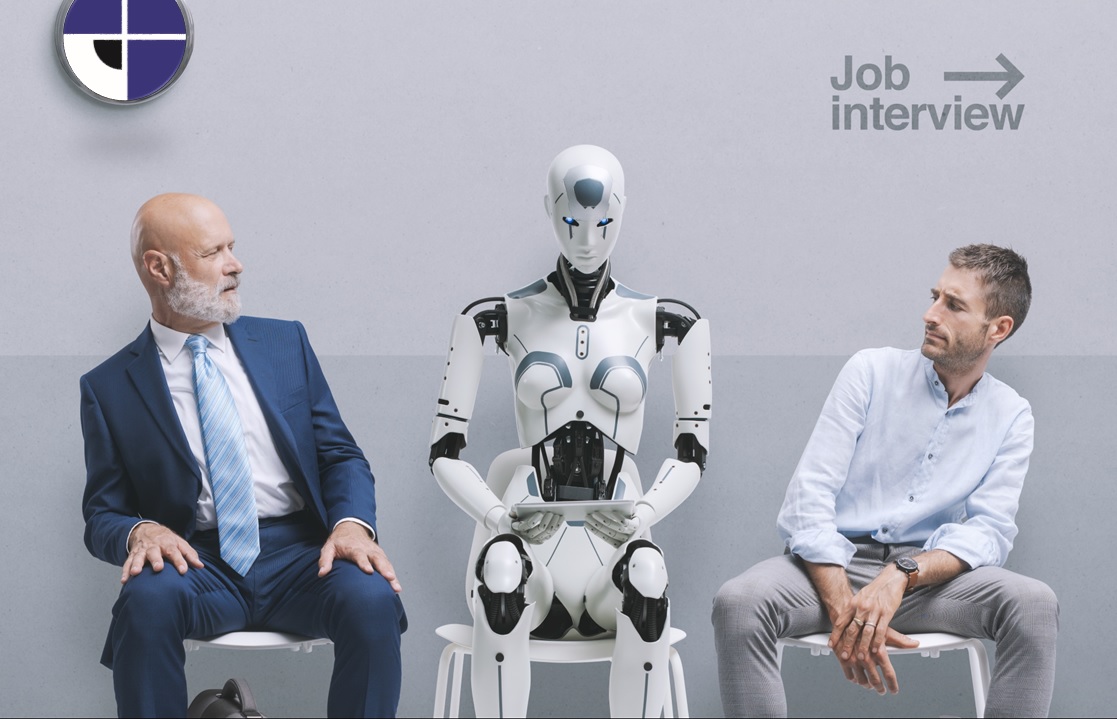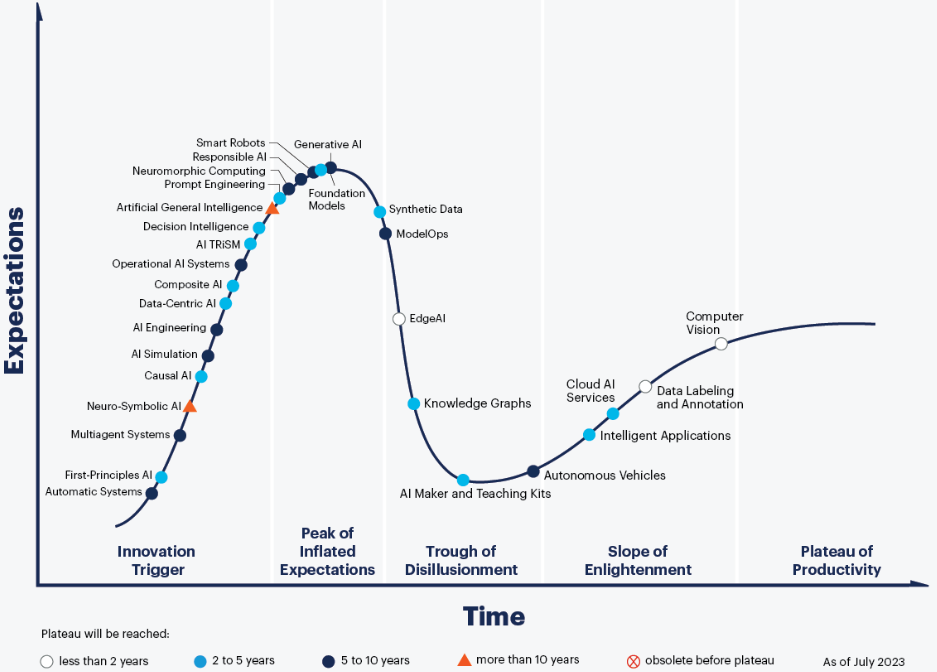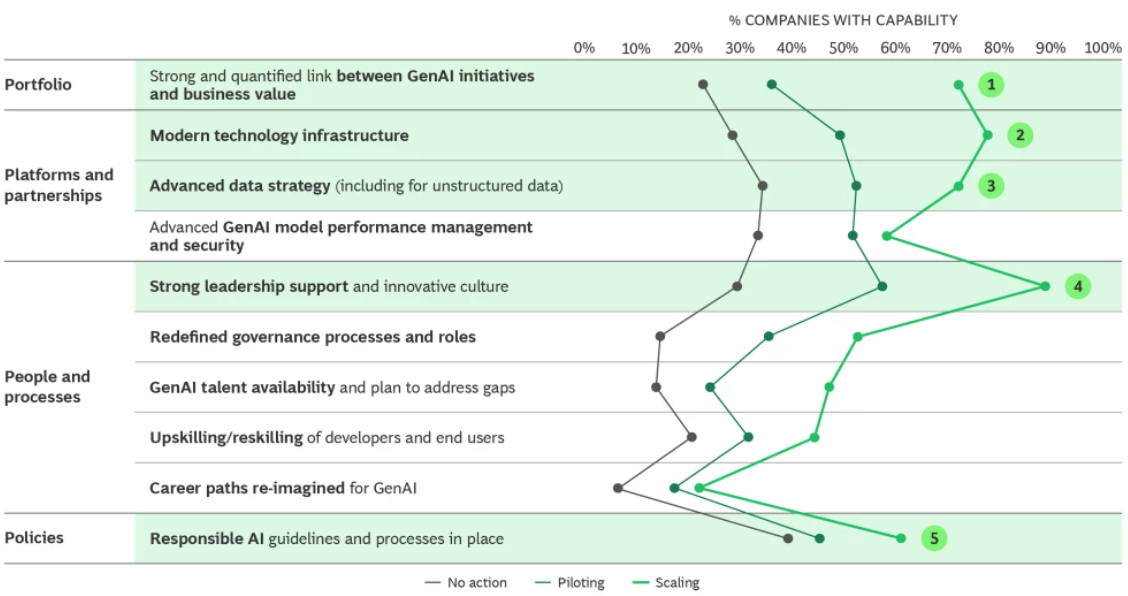Currently, you can’t open a trade magazine, browse recognised specialist sites on the web or attend specialist conferences in person without “stumbling” across the topic of artificial intelligence. Many so-called experts have obviously absorbed AI with their mother’s milk and live more in the artificial than in the real world.
Can we please “ground” the topic again? Of course, AI is a very important topic and will have a significant impact on working methods and innovation processes in the future. But in which companies has AI left the pilot and experimental phase behind and is it playing a significant role in day-to-day business?
What effects can be proven in terms of time, quality, costs, employee satisfaction and productivity?
This article is an attempt to make a small contribution to this and I am already looking forward to your comments and use cases as I write.
What is wishful thinking, what is reality?
McKinsey published a study on 30 May this year and titled: The introduction of GenAI adoption spikes and starts to generate value. Here are some details:
- 65 per cent of respondents in the study apparently said their organisations regularly use generative AI – almost double the number in the previous survey in July 2023.
- The average organisation that uses AI does so in two functions, most commonly in marketing and sales and in product and service development.
- The survey shows that the use of AI is increasing in all regions, with the largest increases in Asia Pacific and China.
- By industry, respondents working in the energy and materials industries and the liberal professions are seeing the greatest increase in the use of AI.
- Companies most frequently see meaningful cost reductions from using generative AI in human resources and revenue increases in supply chain management.
- The use of analytical AI most often leads to cost reductions in service and revenue increases in marketing and sales.
Spencer Stuart published a study on July 2nd of this year with the headline: For many companies, culture is more important than AI. A few details on this too:
- For CEOs and supervisory board members surveyed, topics that are more inward-looking are at the top of the list of measures: Corporate culture (75 percent), employee issues (69 percent), and environmental and regulatory issues (59 percent).
- According to the survey results, AI (40 percent) and measures in the context of global political uncertainty (28 percent) only play a subordinate role.
- Only 38 percent of CEOs and 42 percent of supervisory board members see AI as one of the priorities that they specifically address.
- Female managers tend to show more interest in AI than their male counterparts and accordingly hire more employees with AI-specific expertise.
The truth probably lies somewhere in between.
Where does AI already play a role in day-to-day business?
In this article, I briefly outline some current ones:
BASF – Agriculture Products (AP) – has developed Microsoft PowerApps to automate business processes with little effort. Cloud Flows and Desktop Flows are used, data is visualised and integrated into the Microsoft Power Platform with Power BI and Power Automate.
The DFB (German National Team) uses the SAP AI Joule. An app delivers the data analyses directly to the smartphones of coaches and players. Here are a few examples:
- When the ball is lost, the question arises: Should I now play counter-pressing? AI can answer this question based on live data and analyses of past matches.
- So-called limb tracking can be used to estimate the fatigue of each individual player or to assess technical skills, for example when receiving the ball.
- AI is also used for training control. Training can be customised depending on the player’s individual workload.
Of course, IBM cannot be left out as an AI developer. A year ago, IBM presented its first commercial AI called WatsonX. Its algorithm is trained using internal company data.
Mastercard has launched concrete actions for employees in five areas: AI as …
- career coach,
- well-being advisor,
- workflow assistant,
- co-pilot and
- partner in personnel planning.
The basis of these campains is the culture, “The Mastercard Way”.
Wolters Kluver has used GPT in combination with the organisation’s Global Career Framework to capture the core responsibilities and skills for each role in the organisation (job profile). The positive impact of an AI-driven, competency-based talent management approach is already visible.
In his analysis of company examples, Johannes Sundlo comes to the following conclusion: GPTs are an excellent tool for
- scenario planning,
- forecasting future staffing needs,
- identifying talent gaps and
- developing integrated talent strategies.
What other use cases would you like to add? Please feel free to comment directly on this post.
What other practical examples can we expect to see in the near future?
Culture & Skills
It is not new to know that we are facing shifts in demand for employees in Europe, driven by AI and automation. The demand for employees in STEM professions, healthcare and other highly skilled occupations will increase, while the demand for occupations such as office workers, production workers and customer service workers will decline.
Companies seem to be aware that preparatory work in terms of culture and comprehensive skills is necessary before further practical examples come to fruition. For example, the demand for technological, social and emotional skills will increase, while the demand for physical, manual and higher cognitive skills will stabilize. The McKinsey Global Institute’s “Future of Work” model provides interesting insights into this.
Leadership
We know that the role of a leader will become even more demanding as these developments unfold. I would like to highlight four priorities:
- Leaders need to understand the potential of how AI and GenKI can augment and automate work.
- Once they understand the potential of automation technologies, leaders need to plan the transition to the age of automation and AI; in particular, strategic workforce planning and relocation of staff.
- To ensure the right employees are available in terms of quantity and quality, leaders should apply the 6-B model of strategic workforce planning in a tight market, at least for selected workforce segments.
- Leaders also need to continue their own educational journey on automation technologies to be able to contribute during the transformation.
In this context, Gartner’s Generative AI Guide is worth reading.
HR function
The HR function is well advised not to proceed from the inside out, but to choose the corporate strategy as a starting point and align HR measures with it. Within the framework of the 17 UN Sustainable Development Goals, I would like to particularly draw attention to DEI. In an article in the Harvard Business Review, Andy Baldwin outlines three ways of integrating DEI into the AI strategy.
In line with Gartner’s Hype Cycle for AI, I expect to see more disillusionment with regard to AI and GenKI in the near future rather than further euphoria. To my mind, the vast majority of companies must first do their homework before further use cases can be expected on a broad scale. What do you think?
Conclusion
In my opinion, the essential prerequisites for AI use cases are: corporate culture, buy-in from the workforce, appropriate governance, as well as training and development.
According to BSG, five main capabilities seem to be necessary for a pioneering role in generative AI:
- strong and quantified link between GenAI initiatives and business value,
- modern technology infrastructure,
- advanced data strategy including for unstructured data,
- strong leadership support and innovative culture and
- responsible AI guidelines and processes in place.
Generative AI offers various opportunities along HR processes. According to Kienbaum, the following processes are in the foreground:
- Management processes: HR controlling & analysis, HR data analytics & innovation.
- Support processes: HR reporting, payroll & time management, HR IT & HR process management; personnel support & administration.
- Core processes: Sourcing, recruiting & onboarding; learning & competency management, performance management; compensation management & grading.




Leave A Comment